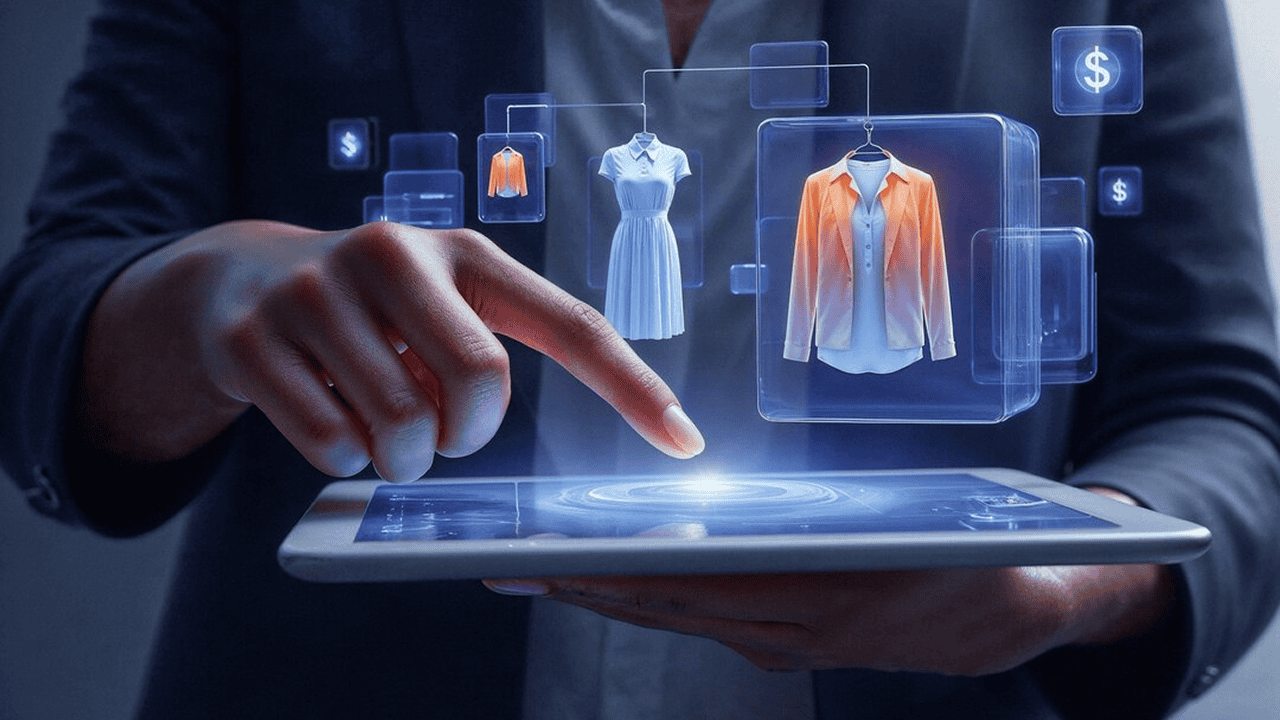
Digital Transformation in Retail: A 2025 Guide to Innovation, Strategy, and Competitive Advantage
Introduction
The retail industry is undergoing a profound evolution. From artificial intelligence in customer service to blockchain-backed supply chains, digital transformation is no longer a future aspiration—it’s the current battlefield for survival and success. In this in-depth article, we will explore the multifaceted impact of digital transformation on the retail industry in 2025, covering trends, technologies, case studies, and strategies for adaptation.
1. What is Digital Transformation in Retail?
Digital transformation in retail refers to the integration of digital technologies into all aspects of the retail value chain—from procurement and inventory management to customer experience and post-sale services. It’s not just about adopting new tools but reimagining business models to be data-driven, agile, and customer-centric.
Key characteristics:
- Customer-first mentality with digital interfaces
- Omnichannel integration across physical and digital touchpoints
- Automation and intelligence at the core of operations
- Data-centric decisions replacing gut-instinct strategies
2. Why 2025 Is a Pivotal Year
Retail in 2025 is shaped by rapid shifts caused by:
- Post-pandemic consumer behavior normalization
- Sustainability pressures from Gen Z and regulators
- AI maturity and availability of no-code/low-code platforms
- Resurgence of physical retail driven by experiential commerce
- E-commerce saturation forcing differentiation via digital services
Retailers that delay digital innovation risk becoming irrelevant in a world where Amazon, Walmart, and Shopify set consumer expectations.
3. Top Technologies Powering Retail Digital Transformation
3.1 Artificial Intelligence and Machine Learning
AI is revolutionizing retail through:
- Personalized recommendations on e-commerce platforms
- Predictive inventory and supply chain forecasting
- Dynamic pricing models based on real-time demand
- Visual search and voice commerce integrations
- AI-powered customer support via chatbots and voice assistants
Example: Sephora’s AI-enabled Color iQ tool helps customers find the perfect foundation match online and in-store.
3.2 Internet of Things (IoT)
IoT is instrumental in:
- Smart shelves and real-time stock updates
- Customer heat mapping in physical stores
- Automated checkout systems
- Connected supply chains
Example: Amazon Go stores use IoT sensors and computer vision to offer a cashier-less shopping experience.
3.3 Blockchain and Supply Chain Transparency
Blockchain ensures:
- End-to-end product traceability
- Anti-counterfeit verification
- Faster, secure supplier transactions
Example: Walmart uses blockchain to trace the origin of fresh produce within seconds, enhancing food safety compliance.
3.4 Augmented Reality (AR) and Virtual Reality (VR)
AR/VR is reshaping how consumers shop:
- Virtual try-ons for apparel, glasses, and makeup
- Virtual showrooms for furniture and home decor
- Immersive brand experiences
Example: IKEA Place app lets users visualize how furniture fits in their home using AR.
3.5 Mobile and Contactless Payments
Mobile wallets and contactless cards are the norm, powered by:
- NFC technology
- Mobile-first POS systems
- Biometric payment authentication
Retailers embracing digital payments can reduce friction, improve security, and increase checkout speed.
4. The Rise of Omnichannel Retailing
In 2025, the line between physical and digital retail is nearly gone. Omnichannel is the new baseline—not a differentiator.
Core principles:
- Consistency across platforms (website, app, in-store)
- Unified commerce platforms combining inventory, sales, CRM
- Click-and-collect, curbside pickup, and same-day delivery
- Real-time visibility for customer and employee interfaces
Example: Target’s omnichannel success is fueled by using stores as fulfillment hubs, reducing logistics costs.
5. Data Is the New Currency
Data-driven retail focuses on:
- Customer segmentation
- Lifetime value tracking
- Churn prediction models
- Campaign attribution analytics
Retailers must invest in:
- CDPs (Customer Data Platforms)
- GDPR/CCPA compliance
- Consent-based marketing strategies
The goal is not just more data, but smarter insights.
6. The Role of Automation
Retail automation drives efficiency in:
- Warehouse robotics
- Automated merchandising
- Self-checkout terminals
- Auto-replenishment systems
This reduces costs, speeds up service, and allows human staff to focus on relationship-building tasks.
7. Cloud and Edge Computing for Retail Scalability
Cloud platforms enable:
- Faster deployment of retail apps
- Data unification across geographies
- Real-time updates to pricing, product info
Edge computing improves:
- Latency-sensitive operations (e.g., POS, in-store AI)
- In-store connectivity and personalization
Retailers are adopting hybrid models to optimize cost and performance.
8. Cybersecurity and Privacy in Digital Retail
With great tech comes great responsibility. Data breaches can erode years of brand trust.
Best practices include:
- Multi-layer security protocols
- Zero-trust architectures
- Cybersecurity awareness training
- Vendor risk audits
Compliance with global privacy regulations (GDPR, CCPA, and now India’s DPDP Act) is mandatory in 2025.
9. Sustainability Through Digital Innovation
Retailers are under increasing pressure to go green. Digital tools help by:
- Tracking carbon emissions across supply chains
- Optimizing delivery routes to reduce fuel usage
- Reducing returns through AR/VR size visualization
- Enabling resale/recycle marketplaces
Digital sustainability is both a branding asset and an ethical necessity.
10. Workforce Transformation and Digital Skills
Digital transformation is not just tech—it’s talent.
Future-ready retailers:
- Upskill employees in data literacy, CX tools, and AI
- Deploy digital adoption platforms for onboarding tech tools
- Use gig and AI-based labor models to balance costs
Digital HR and learning systems are replacing paper-based processes.
11. Key Retail Sectors Embracing Digital Disruption
| Sector | Digital Impact |
|---|---|
| Grocery | Scan-and-go, smart fridges, digital coupons |
| Fashion | Virtual try-ons, AI stylists, 3D design tools |
| Electronics | Online configurators, automated demos |
| Home Decor | AR visualizations, smart home integrations |
| Health & Beauty | AI skin analysis, personalized regimens |
| Restaurants | App-based orders, robotic kitchens, contactless dine-in |
12. Case Studies of Successful Digital Retail
12.1 Nike
- Launched “Nike Fit” using AI for foot scanning and sizing
- Introduced experiential stores with AR-based storytelling
- Integrated app seamlessly with in-store inventory and loyalty
12.2 Zara
- Uses RFID for real-time inventory updates
- AI predicts trends and guides supply chain decisions
- Mobile app integrates payment, wish lists, and order tracking
12.3 Warby Parker
- Seamless online-to-offline eyewear retail
- Virtual try-on with AR
- Mobile-first eye exams and prescription ordering
13. Challenges in Digital Transformation
Despite benefits, hurdles remain:
- High upfront tech investment
- Integration difficulties with legacy systems
- Resistance to change in workforce culture
- Data silos limiting full customer view
- Security risks with more touchpoints
Overcoming these requires leadership commitment and agile methodology.
14. KPIs to Measure Digital Transformation Success
Success must be measured holistically:
| Area | KPIs Example |
|---|---|
| Customer Experience | NPS, CSAT, personalization score |
| Operational Efficiency | Order cycle time, inventory turnover |
| Financial Impact | Revenue per visitor, ROI of tech spend |
| Digital Maturity | Tech adoption rates, system uptime |
15. Future Trends to Watch (2026 and Beyond)
- AI Agents for autonomous product development
- Digital twins of stores for simulation and testing
- Decentralized marketplaces using blockchain
- Neuro-commerce via brain-computer interfaces
- Hyper-personalized marketing using synthetic media
Retailers must keep evolving to ride these waves rather than drown beneath them.
Conclusion
Digital transformation is the defining force of modern retail. It demands a strategic overhaul—not just technological investment, but a change in mindset, culture, and leadership. The winners of 2025 will be those who embrace agility, harness data, empower employees, and deliver superior customer experiences across every channel.
Retail is no longer just about products. It’s about connected experiences, personalized journeys, and frictionless transactions—all made possible by digital transformation.
